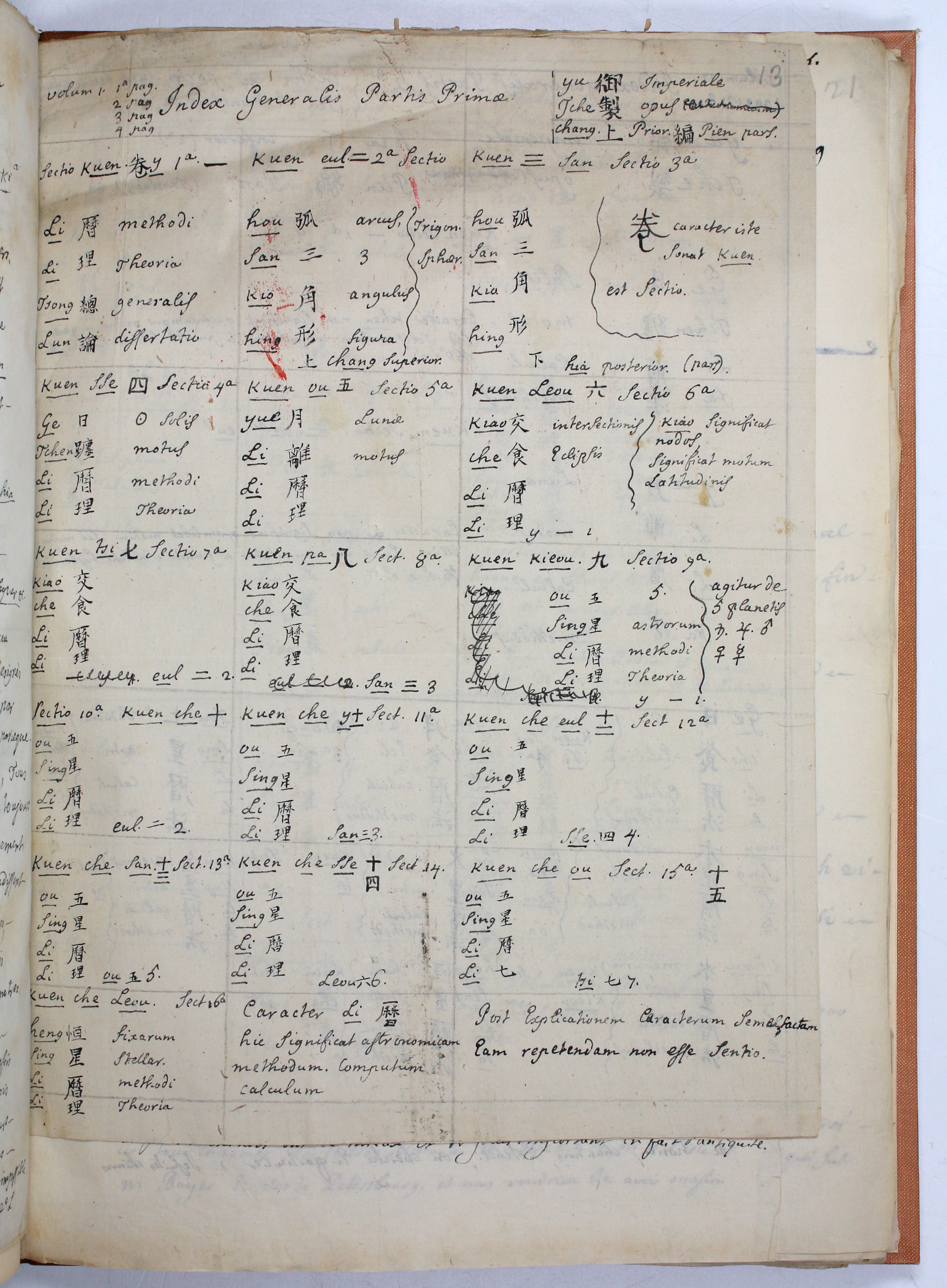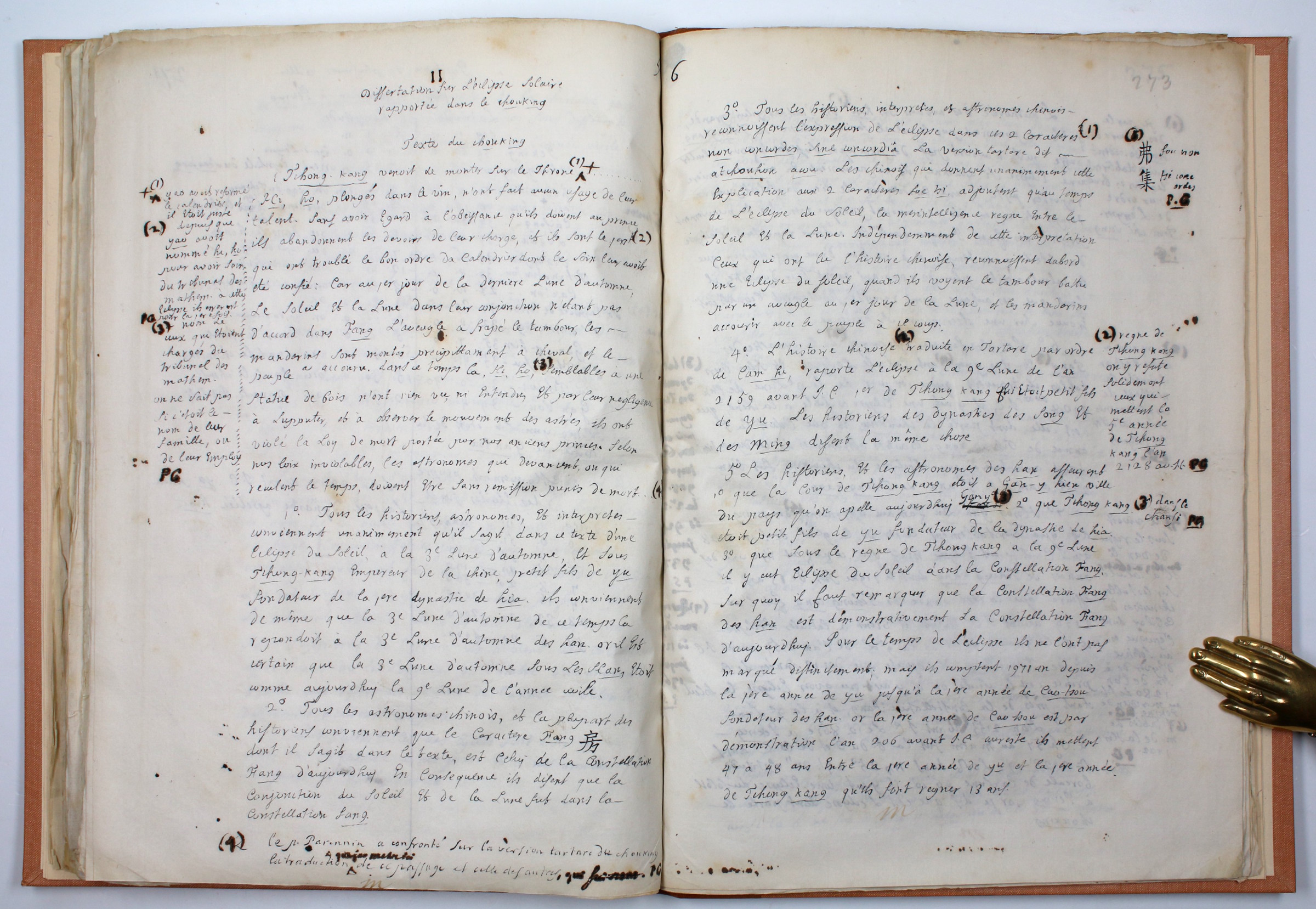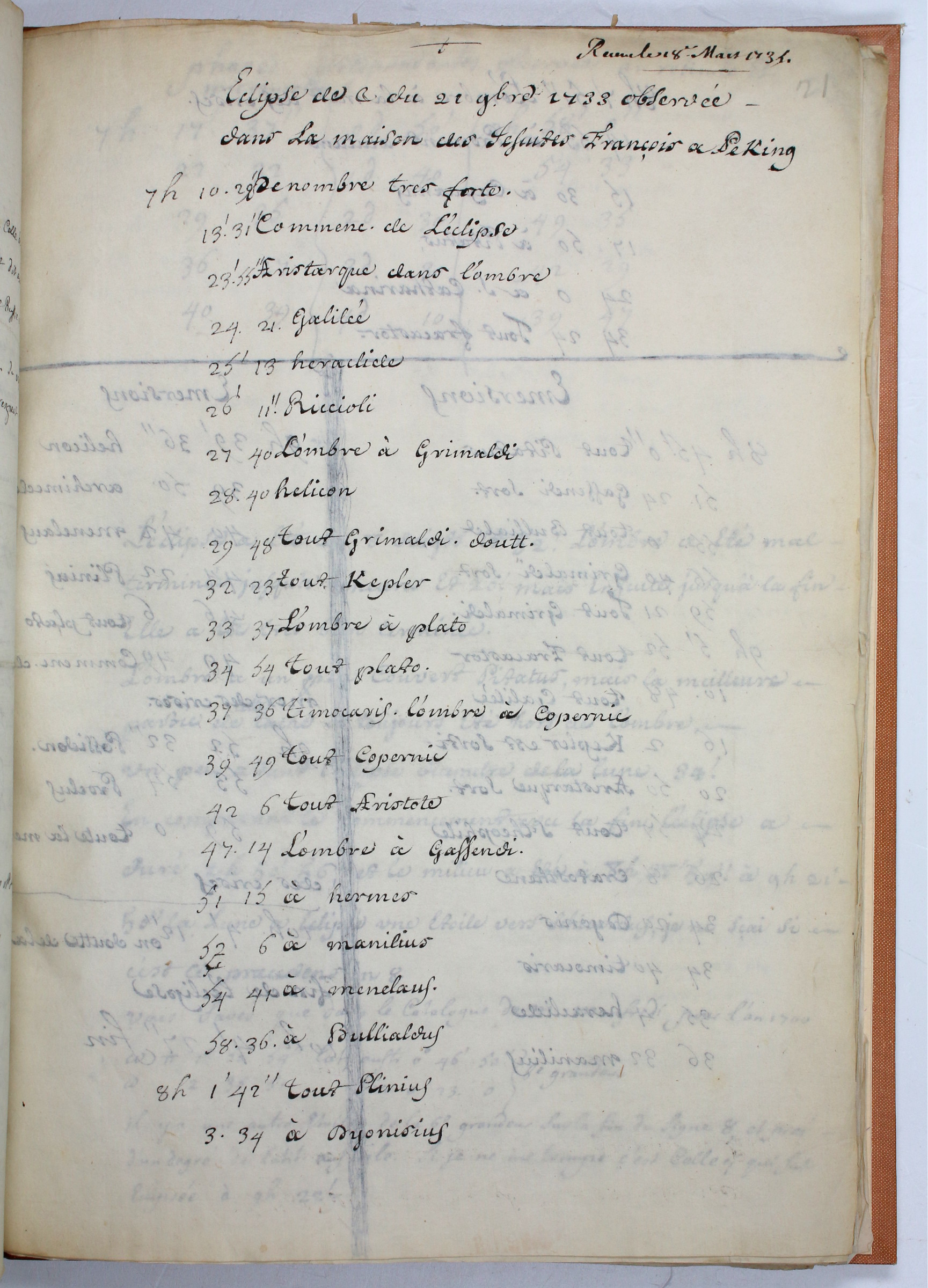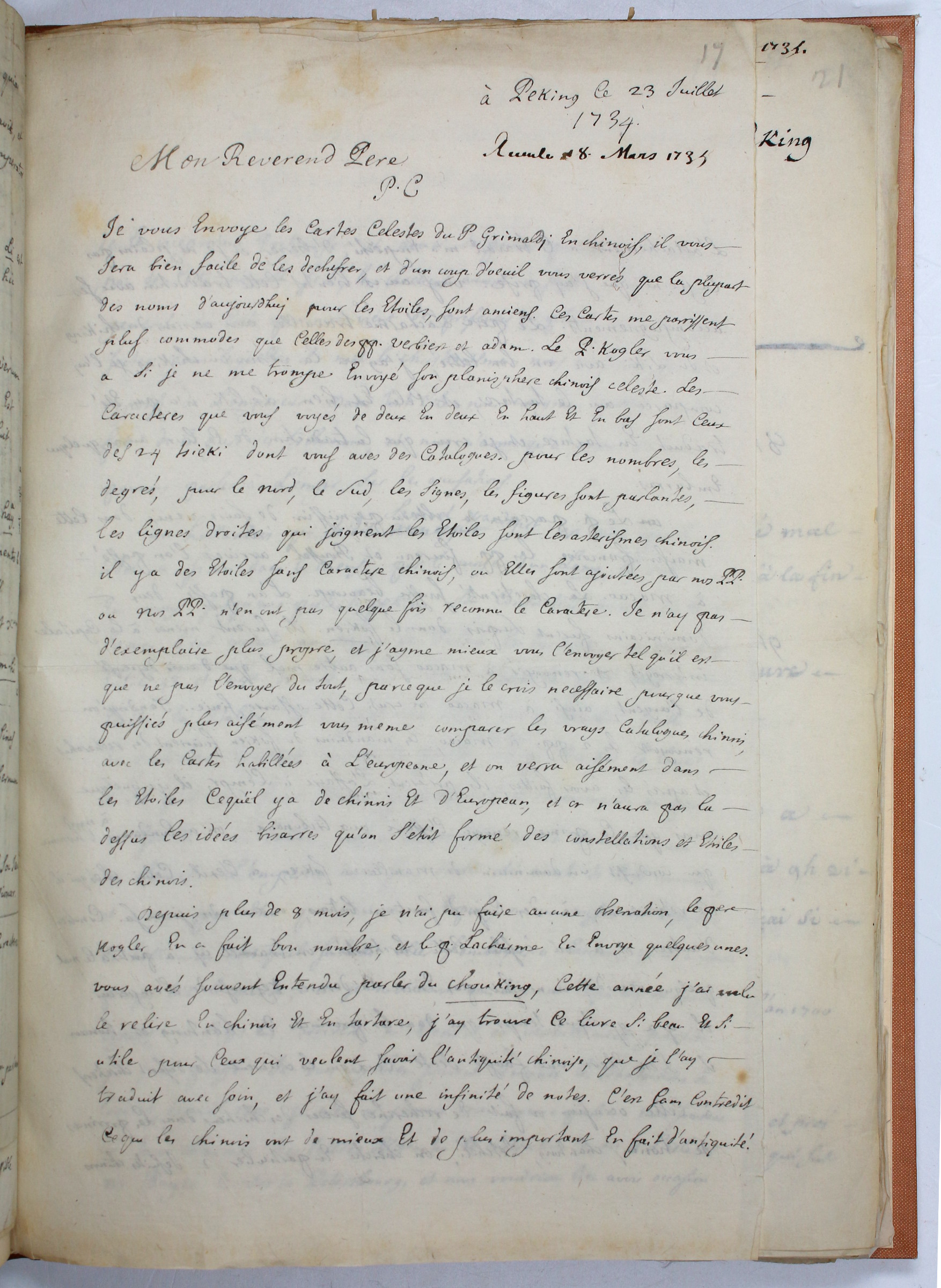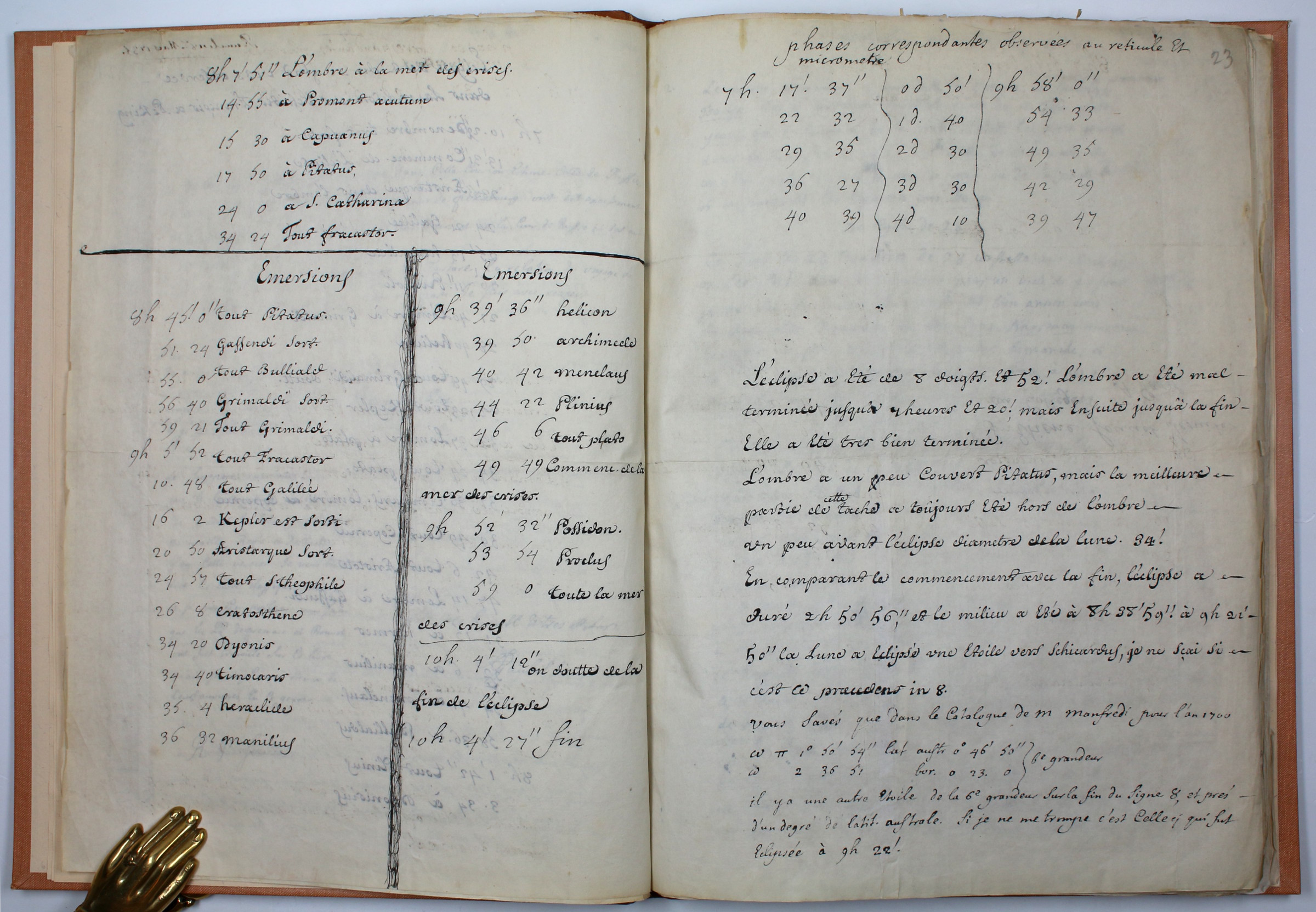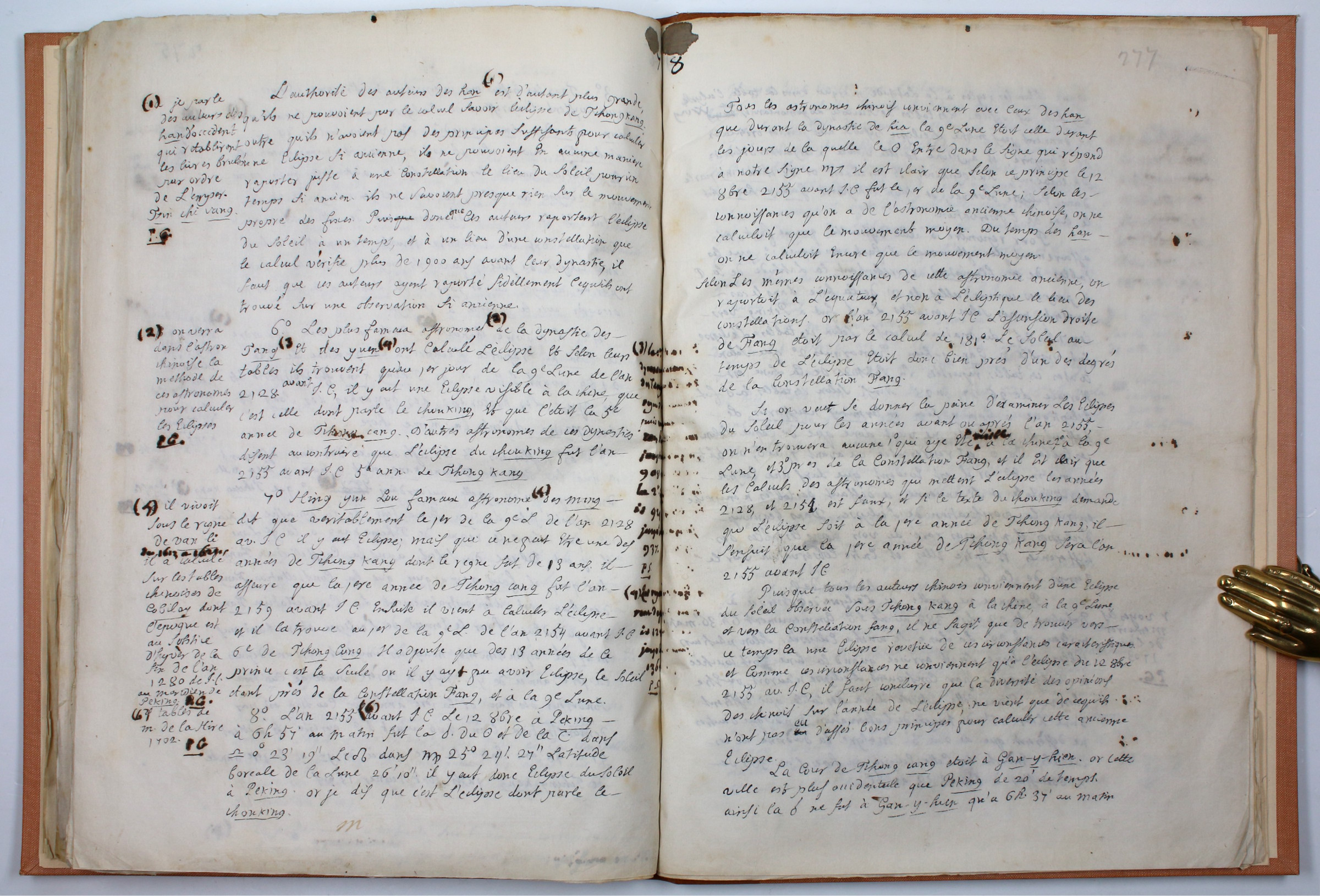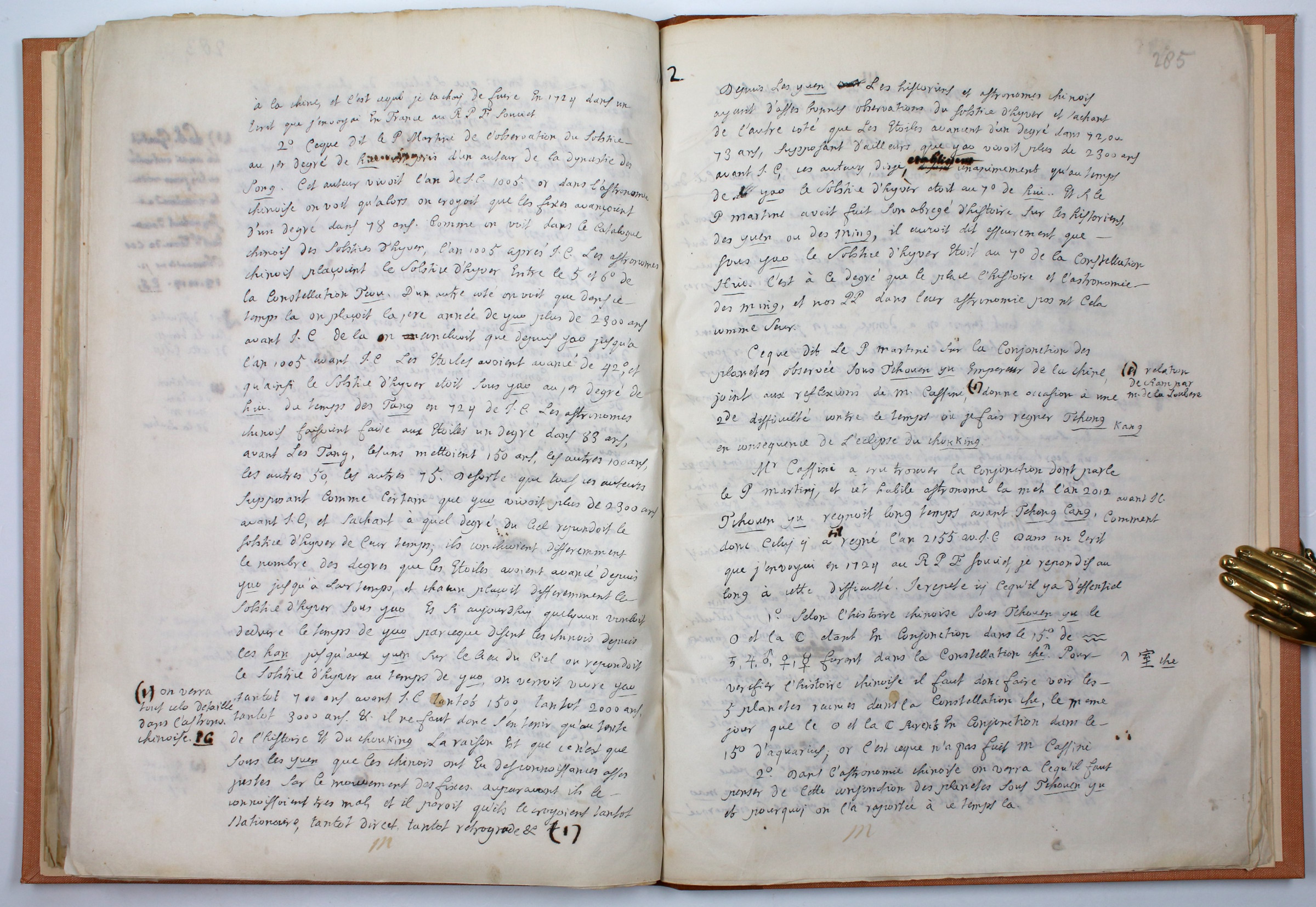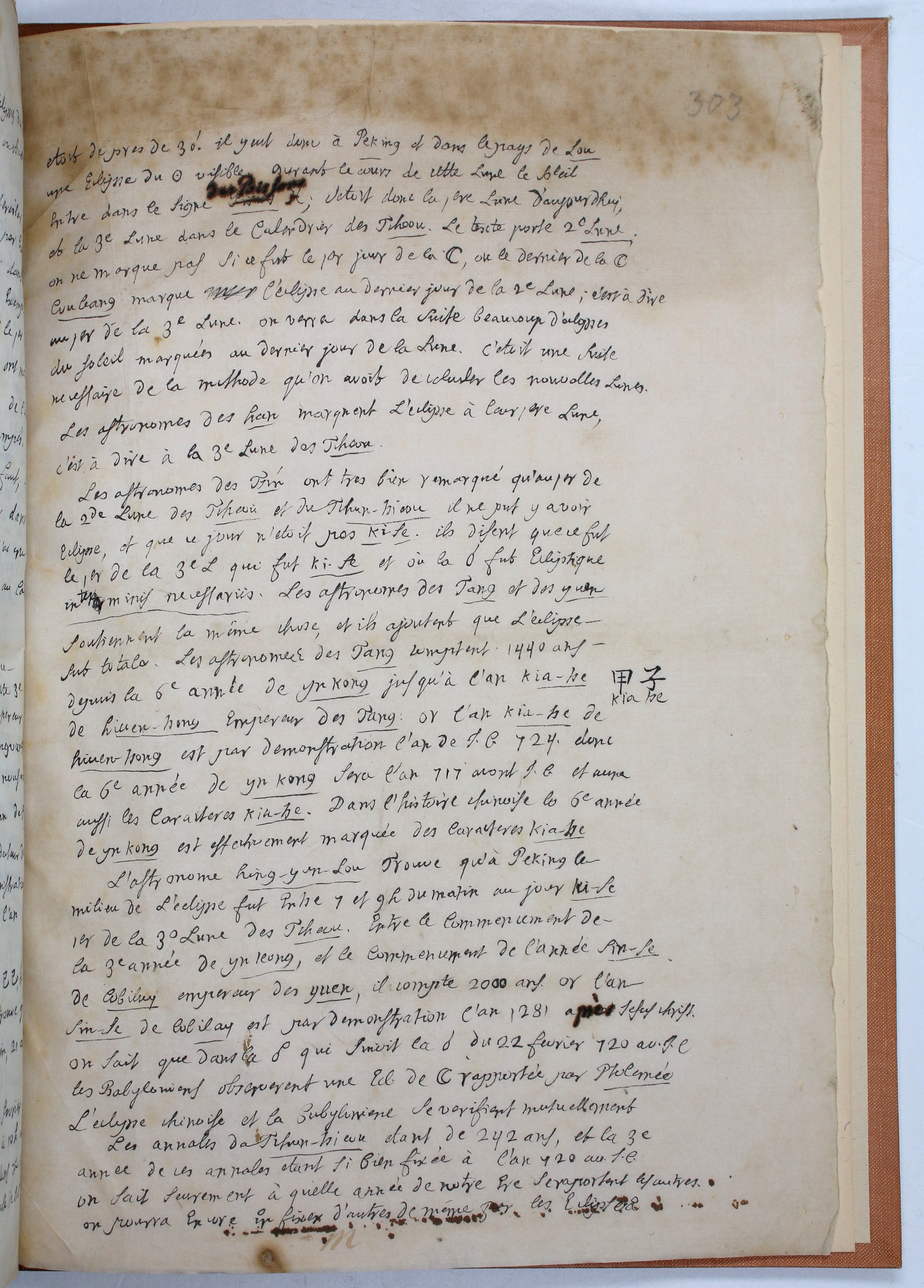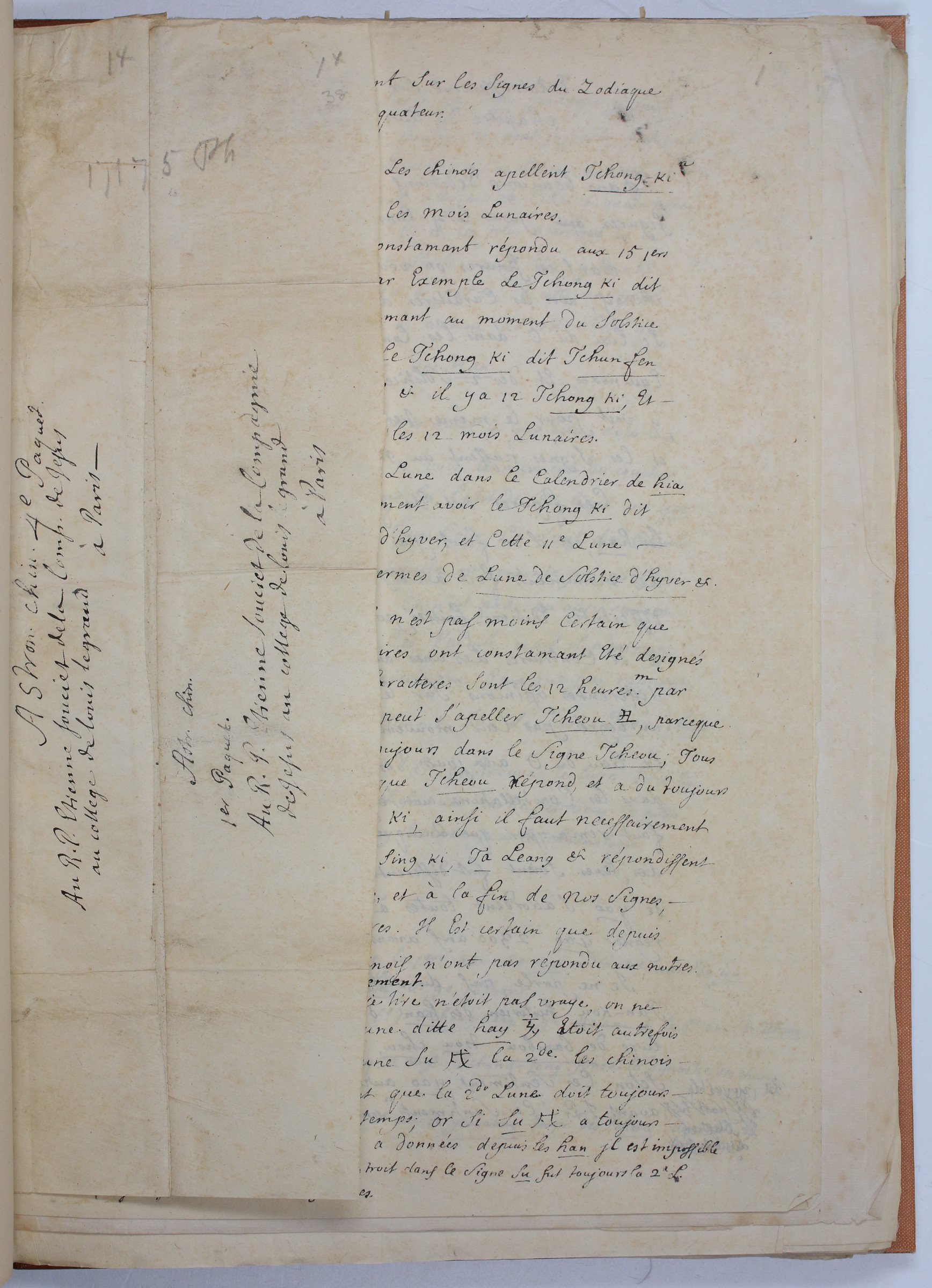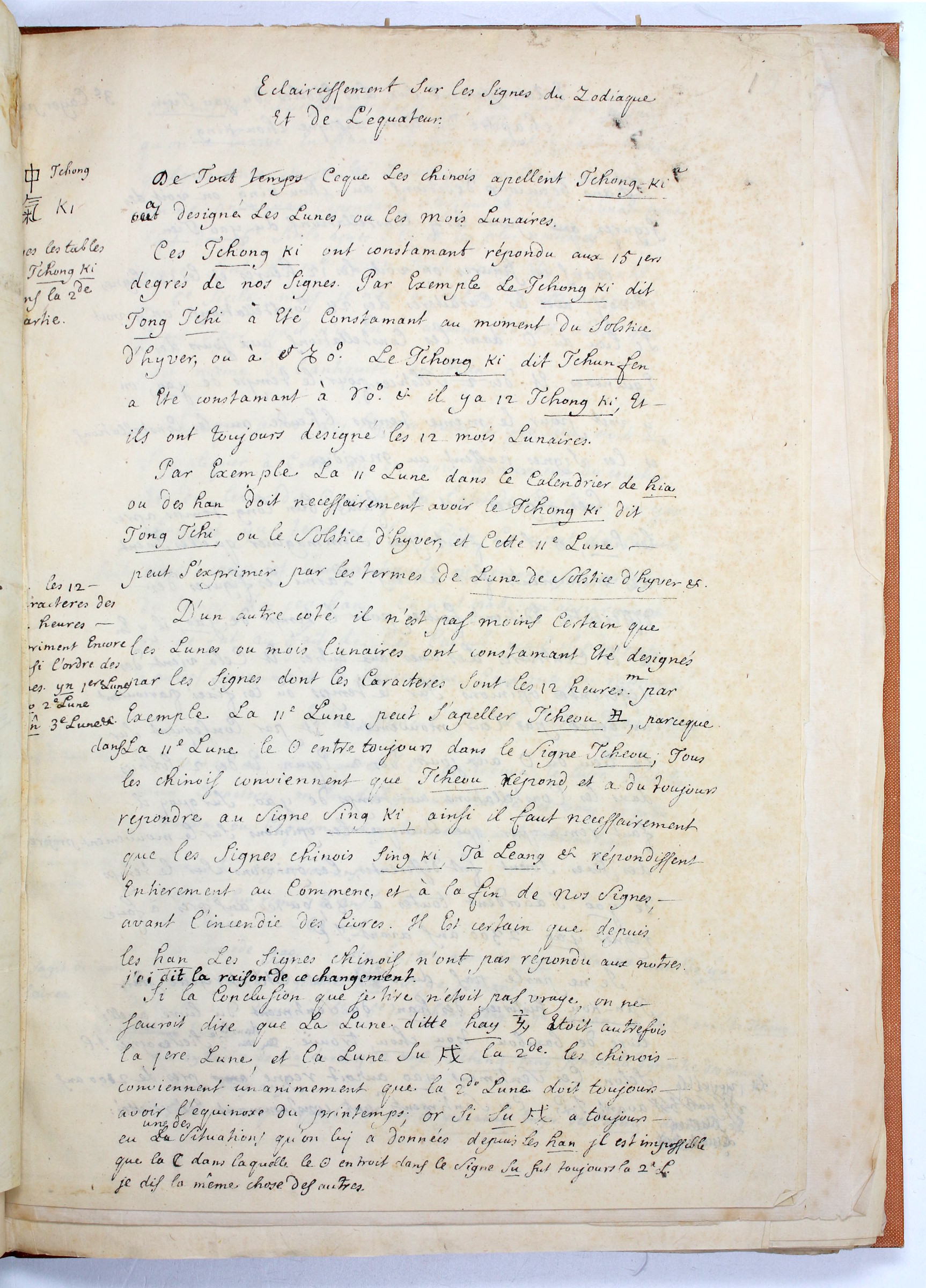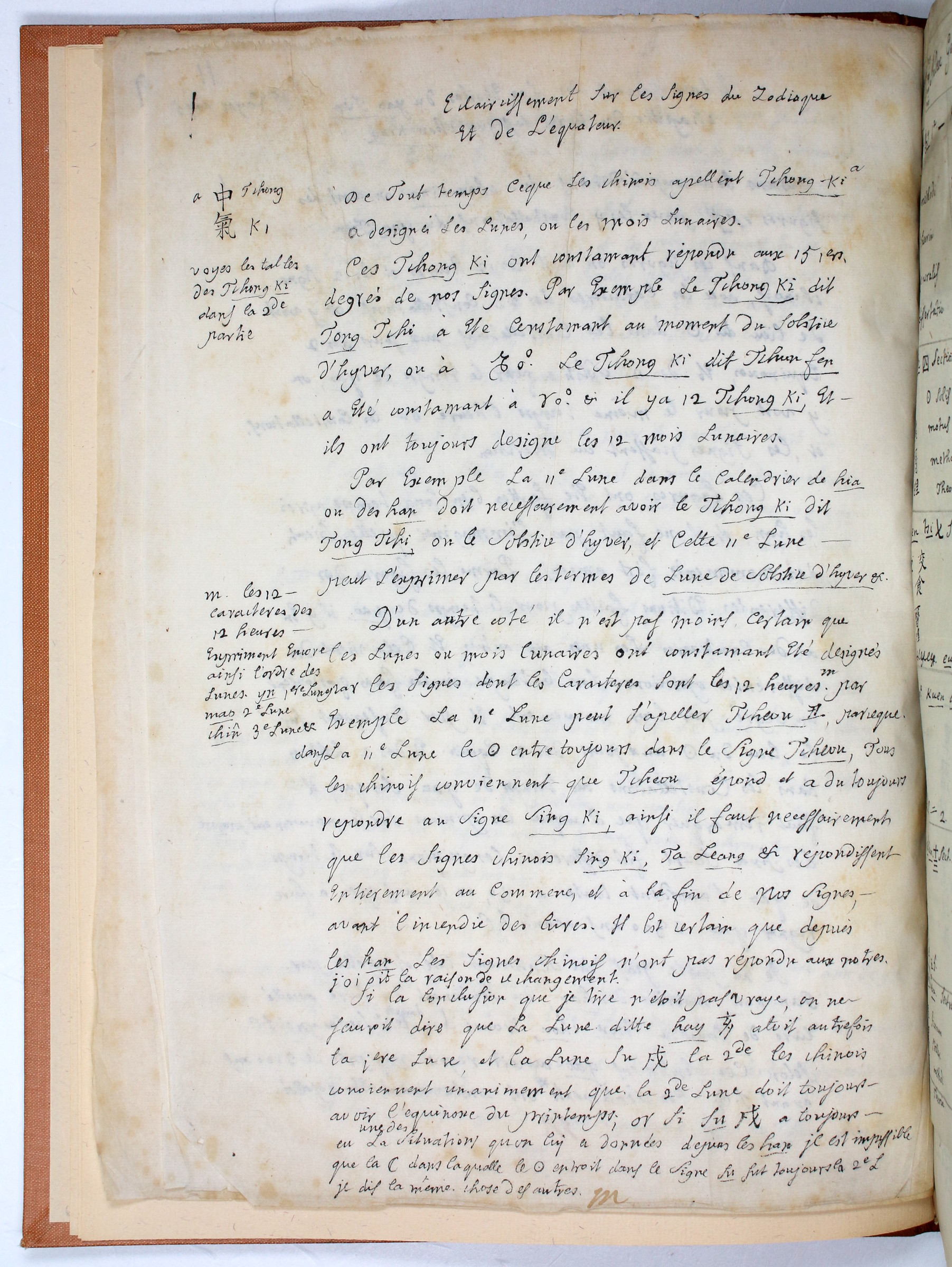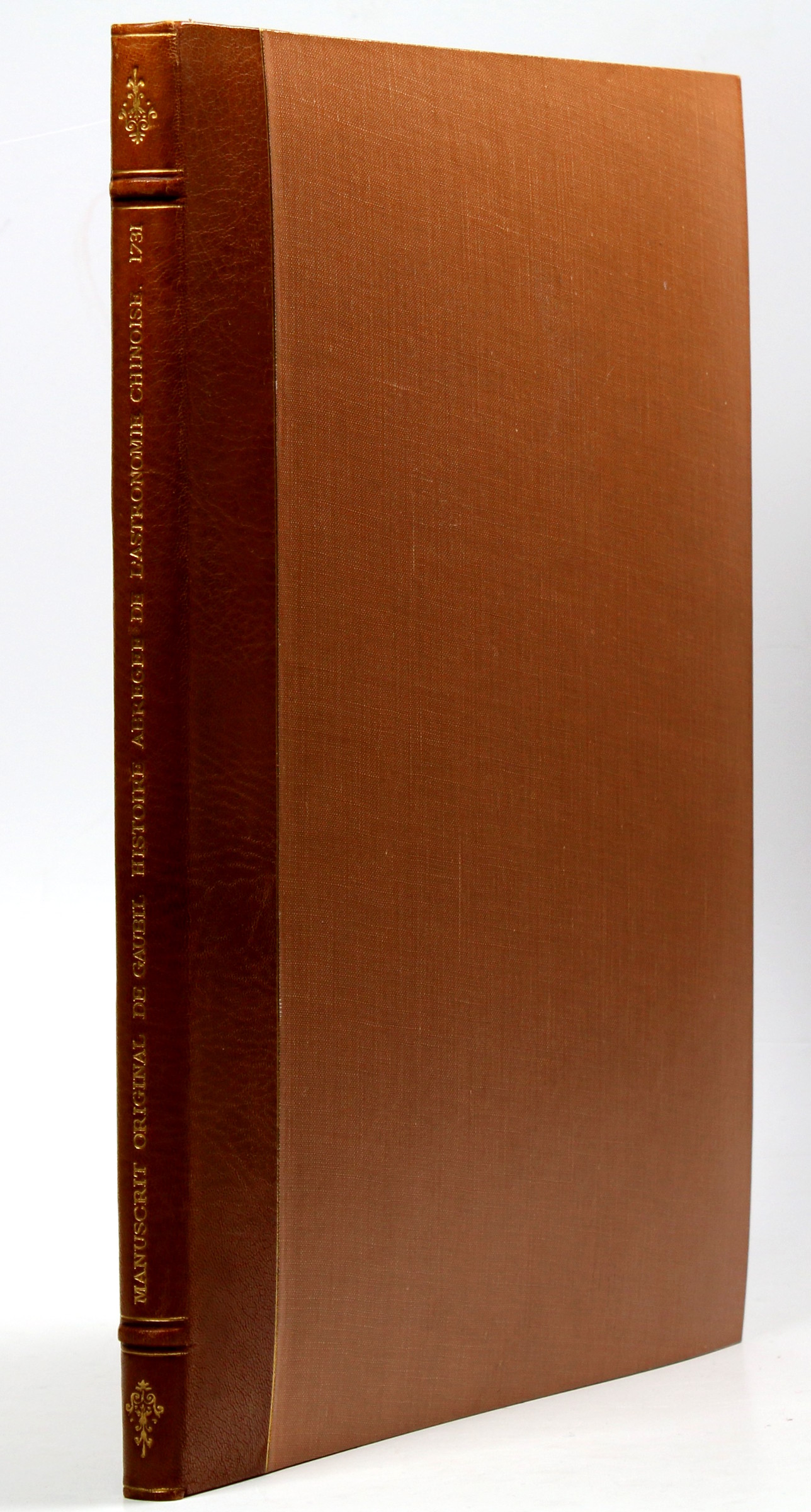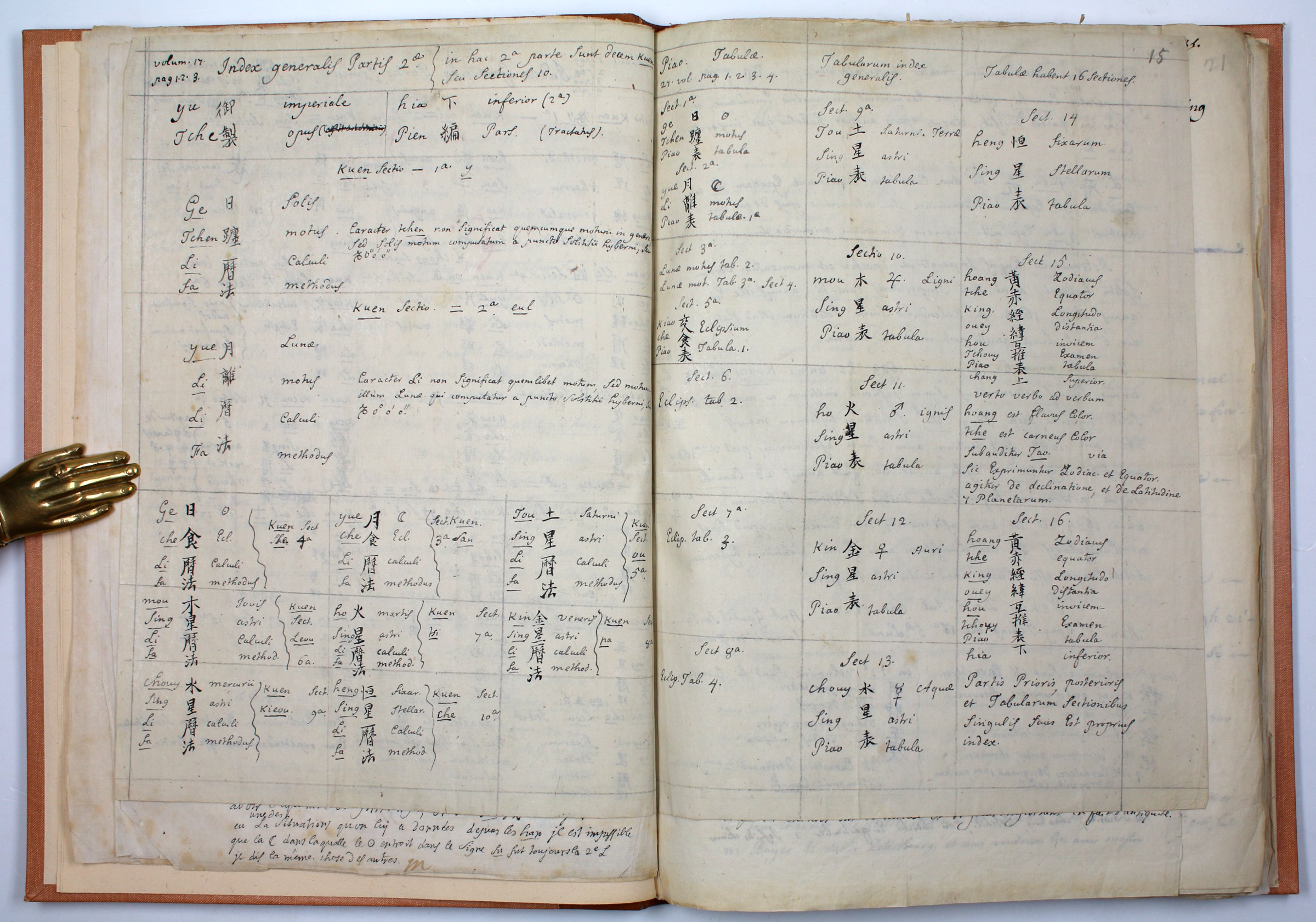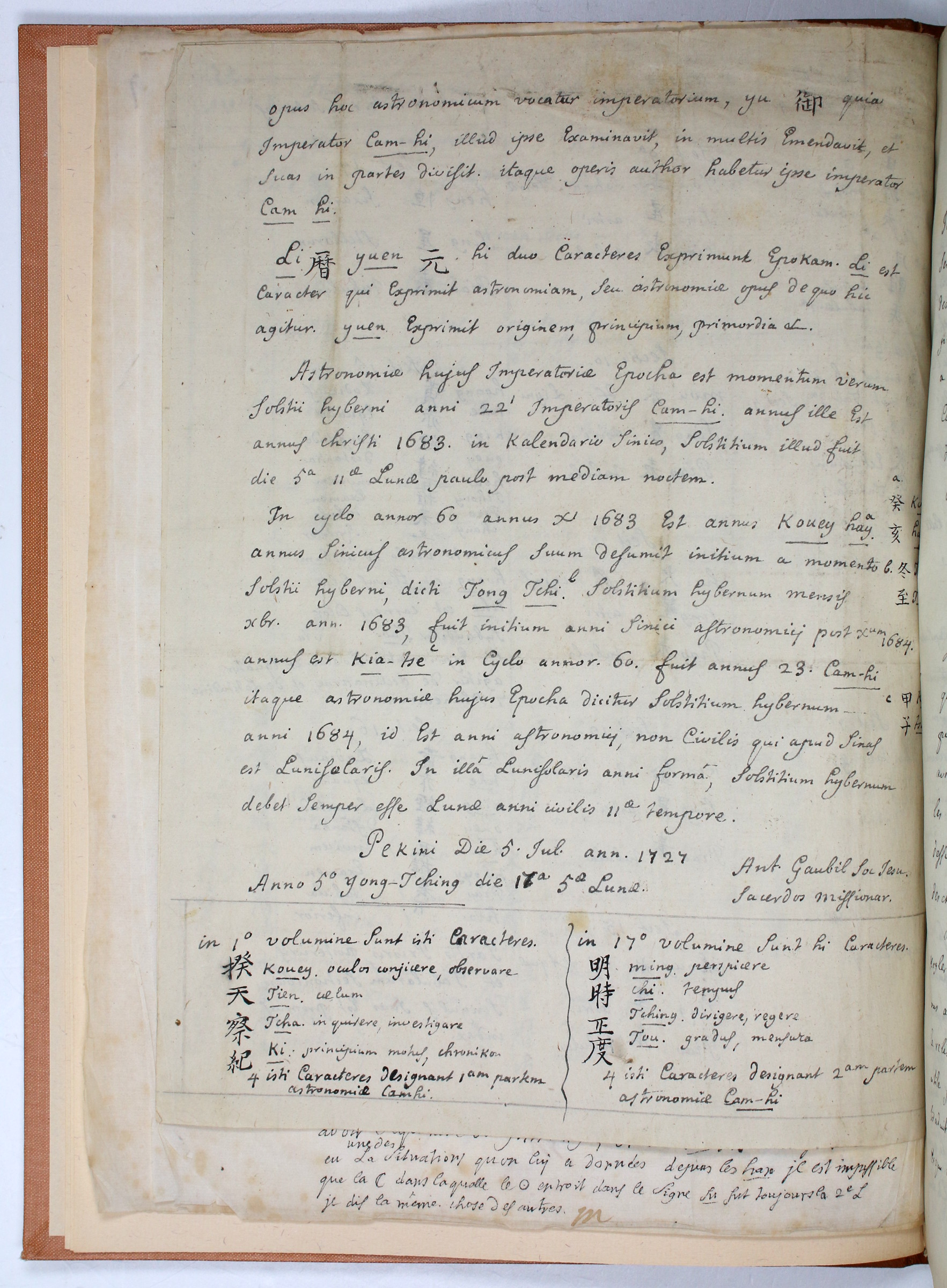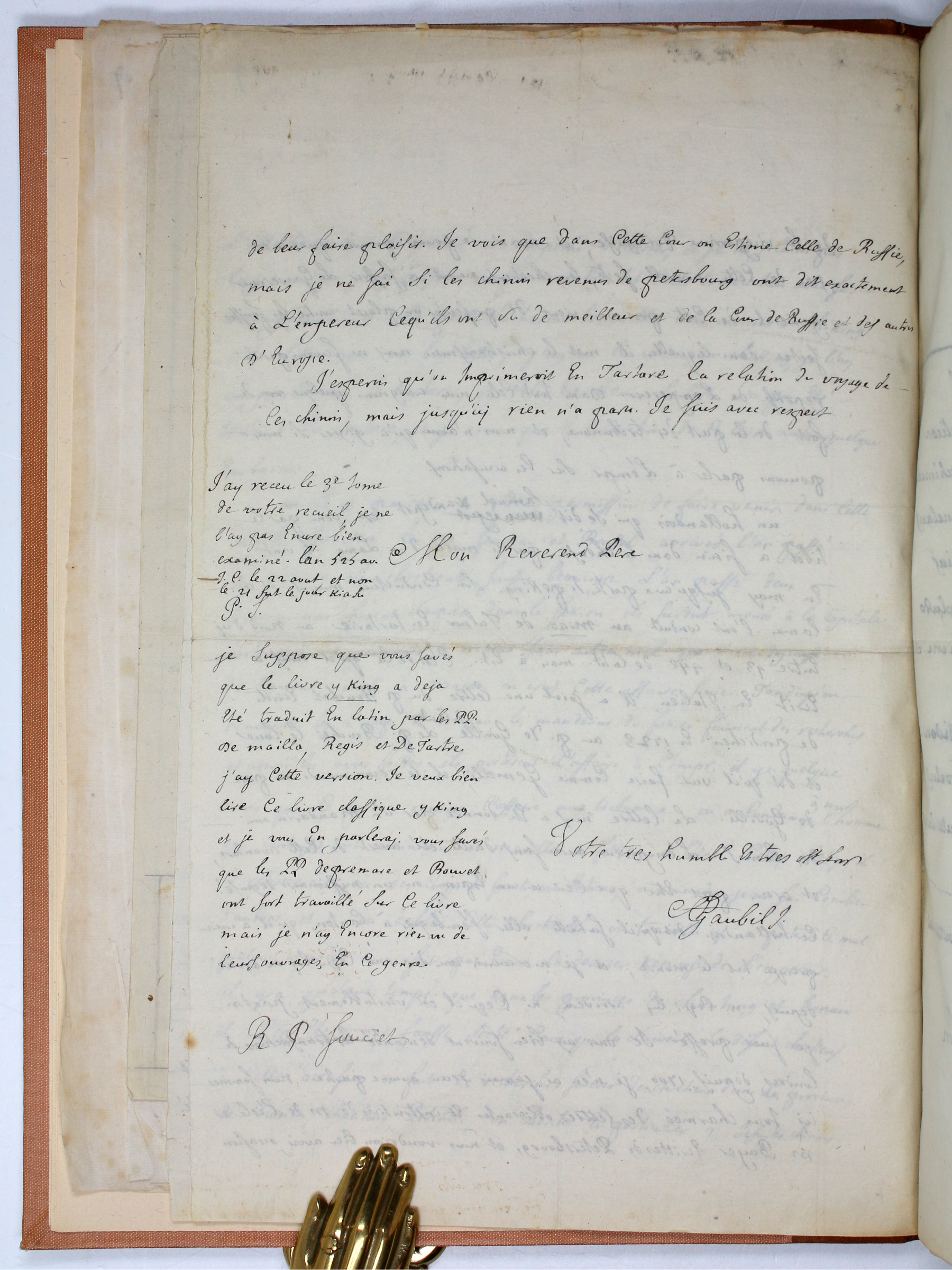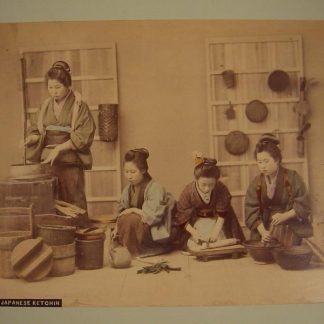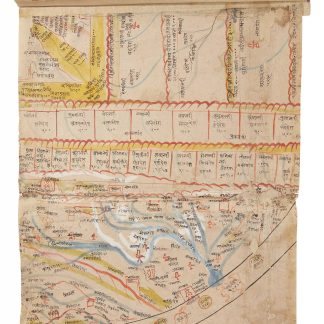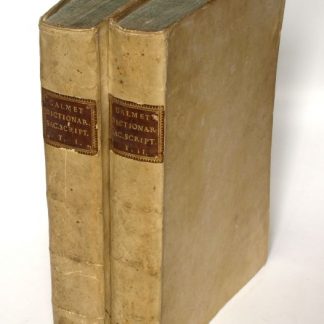The original manuscript written by the "father superior of Chinese Astronomy" (Needham)
"Histoire abrégée de l'Astronomie Chinoise". Autograph manuscript.
Folio. French manuscript on rice paper. (155) pp. With parts of the original wrappers for two of the sections, inscribed by Gaubil, and small slips of paper affixed to several pages with annotations by the editor. Modern quarter morocco, title in gilt on spine.
The first European history of Chinese astronomy, in the hand of its author as written in China, used and extensively annotated by its editor Étienne Souciet SJ (1671-1744), librarian in the Collège Louis-le-Grand in Paris.
This is the original manuscript by Gaubil, which was published by Souciet as the second volume of the "Observations mathématiques, astronomiques, géographiques" in 1732, exactly like here, except for the final part of the appendix, thus corresponding to pp. 1-162 of the publication. The pages have been bound somewhat idiosyncratically, as the beginning of the appendix precedes the main body of the text. It is worth mentioning that while no Chinese types were used for the publication, Gaubil's manuscript includes Chinese characters for many astronomical terms. In addition to the "Histoire abrégée", eight pages of an unpublished explanation of the zodiac and equator signs in Chinese astronomy, an important four-page letter by Gaubil to Souciet and an account of the lunar eclipse of 21 November 1733, observed by the French Jesuits in Beijing, have been added at the beginning of the manuscript.
Antoine Gaubil, who arrived in Beijing in 1722 and would remain there for the rest of his life, was the most important astronomer among the French Jesuits in China, and one of the greatest disseminators of Chinese science and wisdom in Europe in the 18th century. His work on astronomy and as a historian and translator of important Chinese texts such as the "I Ching" earned him the praise of Alexander von Humboldt as the wisest of the Jesuit missionaries. Needham even considers him "the interpreter general and father superior of Chinese astronomy". His long letter to Souciet, dated Beijing, 23 July 1734, is a highly interesting testament to Gaubil's work as an astronomer, but also to his broad interests, the difficult situation of Christians in China, and the scientific networks of the Jesuits. Gaubil opens the letter with the promise to send Francesco Maria Grimaldi's celestial charts to Paris, deeming them more practical than those of his predecessors as Jesuit astronomers in China, Ferdinand Verbiest and Adam Schall von Bell. He also mentions that, according to his knowledge, Ignaz Kögler, director of the Imperial Astronomical Office (Quintian Jian), has already dispatched his planosphere, thus referring to the "Huangdao zong xingtu" ("Two general maps of the stars relative to the ecliptic"), published in Beijing in 1723. Gaubil's own astronomical work had been interrupted for more than eight months, as he was working on a translation of the Shujing, or Book of Documents, while also supporting Alexandre de la Charme with his translations of the Shijing and Liji.
Concerning the mission, Gaubil mentions that Dominique Parrenin obtained permission to bring two French Jesuits to Beijing. In other parts of the country, however, things are said to be very difficult. In Fujian, two Dominican missionaries were recently exiled to Macau, and some of their local supporters severely punished. An official condemnation of "false cults" that made mention of Christianity by a provincial governor also threatened missionaries. In both respects, Gaubil mentions pleas made by the Jesuits in Beijing before the Yongzheng Emperor. At the time, the Dutch adventurer Samuel van der Putte also reached China, coming from Lhasa, and contacted the Jesuits at the court. Gaubil is suspicious of Van der Putte and worries that he might be considered a spy or a disguised missionary by the authorities, thus contributing to the general climate of hostility towards Europeans in China. Finally, Gaubil mentions his correspondence with the fellow Jesuit astronomers Joseph-Nicolas Delisle and Gottlieb Siegfried Bayer in St Petersburg, also remarking on the Chinese appreciation of Russia: "I see that the Russian court is held in high esteem by this court, but I do not know whether the Chinese who returned from Petersburg told the Emperor exactly what they knew best about the Russian court and the others in Europe" (transl.).
Full transcription and translation of the letter is available on request.
Formerly in the library of Sir Thomas Phillipps (1792-1872). Dispersed over several decades in the 20th century, his manuscript collection is considered the largest ever privately assembled to this day.
Some of Souciet's annotations affected by ink corrosion.
Observations mathématiques, astronomiques, géographiques, chronologiques et physiques, tirées des anciens livres chinois, ou faites nouvellement aux Indes et à la Chine, par les Pères de la compagnie de Jésus, tome 2 (Paris 1732). Joseph Needham, Science and Civilisation in China, vol. 3: Mathematics and the Sciences of the Heavens and the Earth (Cambridge 1959).

